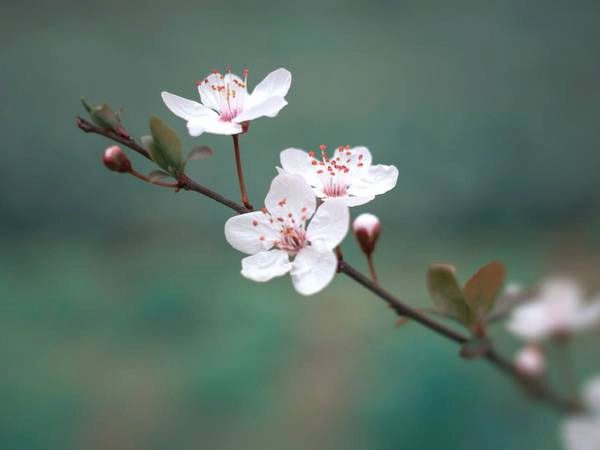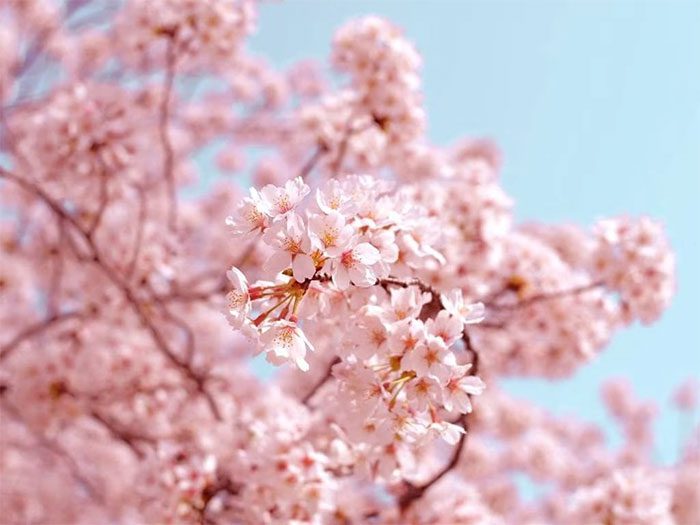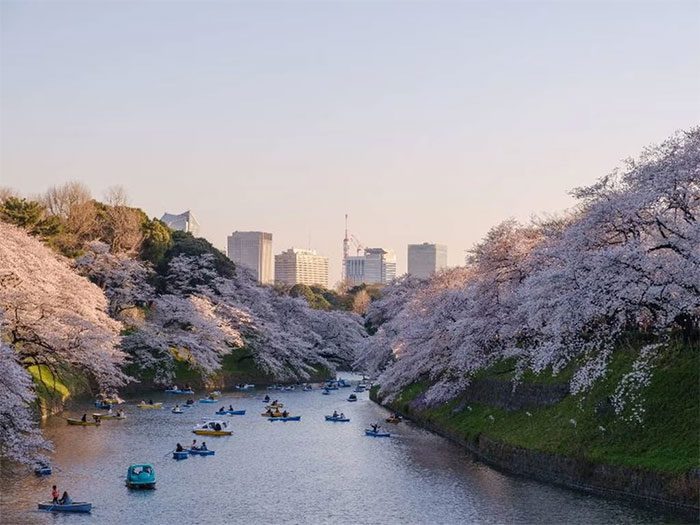Behind these beautiful flowers lies a thousand-year-old legend that teaches us a wonderful lesson about true love.
When spring arrives throughout Japan, the landscape transforms from pure white snow to the vibrant colors of cherry blossoms.
For many Japanese people, sakura (or cherry blossoms) symbolize the fleeting and fragile nature of life. Throughout the year, the tree gathers the best nutrients, and when the warm spring arrives, the white and pink petals begin to bloom. However, this beautiful sight lasts only a few days before the petals fall and drift to the ground.
It serves as a reminder that life is ephemeral despite its breathtaking beauty. A person’s life is like a falling cherry blossom—beautiful yet short-lived. Cherry blossoms are also regarded as the dwelling place of ancestors’ souls, so seeing these flowers evokes memories of heritage and origins.
In Japanese folklore, there are many stories about the origin of cherry blossoms. Regardless of the story, no one can deny the pure beauty of this flower. It is one of the most iconic symbols and a source of pride for the people of the Land of the Rising Sun.
The Legend of Sakura in Japan
There is a widely circulated story that the name sakura comes from a goddess in ancient Japanese literature—Konohara Sakura. She possessed unparalleled beauty. It was Konohara Sakura who planted the seeds of cherry blossoms on Mount Fuji. From there, the flowers thrived and bloomed across Japan.
Behind these beautiful flowers lies a thousand-year-old legend that imparts to us a wonderful lesson about true love.

This legend dates back to ancient Japan when feudal lords led major battles to claim land. During that time, the Japanese people were engulfed in war and sorrow. With each battle, another one would follow, leaving no respite.
Despite the ravages of war, there was a beautiful forest that remained peaceful as if it were inviolable. The trees were lush, thriving and covering the area in green.
Strangely enough, in that forest, there was a tree that never bloomed. Although full of life, its branches bore no flowers.
The tree felt very lonely. The animals in the forest dared not approach it. Even weeds did not grow around its roots.
One day, a fairy appeared, pitying the tree as it withered away from loneliness. One night, the fairy appeared beside the tree and kindly expressed her desire to see it beautiful and radiant.
The fairy used her magic to cast a spell that would last for 20 years. During that time, the tree would be able to feel what a human heart feels. Perhaps in that way, it would find happiness and bloom.
The fairy told the tree that, thanks to the spell, it could transform into a human or remain a tree, whenever it wished. However, if it could not regain its vitality after those 20 years, it would die immediately.
True to the fairy’s words, the tree realized that it could transform into a human and back into a tree whenever it wanted. It tried to remain human for a long time to see if human emotions could help it bloom. However, in the beginning, it was completely disappointed. Looking around, all it saw was war and hatred. Eventually, it returned to being a tree.

Years passed, and nothing changed. No matter what it did, the tree seemed unable to escape its misery. However, one afternoon, it decided to become a human again. It then went to a clear stream and saw a beautiful young girl.
Her name was Sakura. The tree was so impressed by her beauty that it decided to approach her.
Sakura was very kind to it. In return for her kindness, the tree helped her fetch water. They had a pleasant conversation, mixed with sadness about the ongoing wars and many dreams they shared.
When the girl asked for a name, the tree replied, Yohiro (meaning “hope” in Japanese). They became very close friends. They often met to talk, sing, read poetry, and share interesting stories. The more the tree understood Sakura, the more it wanted to be by her side. Each day, it would count every minute just to be with her again.
Eventually, Yohiro could no longer bear it and decided to confess his feelings to Sakura. He also admitted that he was a suffering tree on the brink of death because he could not bloom. Sakura was shocked and left speechless.
Time passed, and the 20 years were coming to an end. Yohiro had reverted to being a tree, feeling more sorrowful each passing day.
One afternoon, Sakura unexpectedly appeared beside him. She hugged the tree and told it she did not want it to die. At that moment, the fairy reappeared and asked Sakura if she wished for Yohiro to become human or to merge with Yohiro as one tree.
Sakura looked around and remembered the heartbreaking war that was ongoing. She chose to merge with Yohiro. And a miracle occurred. The two became one, and the tree finally bloomed.
It is called the Sakura flower—a symbol reminding us that war only brings sorrow, whereas love fills the heart with color and warmth.

An Indispensable Part of Japanese Life
Every year, when spring arrives, from March to May, the people of Japan and tourists from around the world flock to participate in the Cherry Blossom Festival (or Hanami).
The cherry blossom season in each region lasts on average about 10 days. Therefore, the people of Japan closely monitor the forecasts from the Japan Meteorological Agency regarding when the flowers will bloom in each area to avoid missing the chance to witness the blooming beauty.
To forecast the blooming period, many factors are considered, such as the average temperature throughout the year, the temperatures in autumn and winter… The weather conditions from previous years affect the growth status of each cherry tree.
The cherry blossoms usually begin to bloom in the warmer southern regions and gradually move northward across Japan. The most loved viewing spots by both Japanese locals and tourists include Ueno Park (Tokyo), Okinawa Island, and the shores of Lake Kawaguchiko.
Not only do cherry blossoms possess pure and enchanting beauty, but they also contribute to the exquisite cuisine of the Land of the Rising Sun. The Japanese often prepare and salt the petals and leaves of cherry blossoms to eat with bread.
In Japanese cuisine, cherry blossoms inspire chefs to create delicious dishes such as cherry blossom jam, cherry blossom cakes, cold noodles, and cherry blossom ice cream…
The petals are wrapped around sakura mochi—a type of red bean paste cake enjoyed during cherry blossom blooming season. People also often place 2 to 3 cherry blossom petals into a cup of hot water to make a fragrant and visually appealing cherry blossom tea for special occasions.


















































